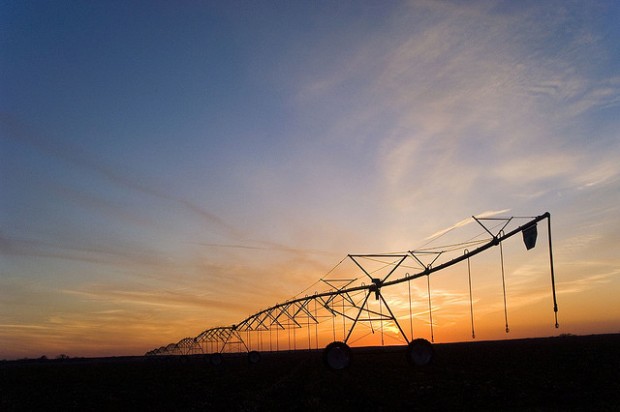Depletion of Ogallala Aquifer Likely Caused By Irrigation, USGS Says
-
Joe Wertz
Groundwater pumping for agricultural irrigation is likely responsible for substantial depletions of the Ogallala Aquifer, which underlies 175,000 square miles in Oklahoma and seven other states, a report by the U.S. Geological Survey suggests.
USGS researchers studied water-level and water storage changes in the Ogallala — also known as the High Plains Aquifer — during two time periods: From pre-agricultural development to 2013, and from 2011 to 2013. The latter saw a large decline, Virginia McGuire, a USGS scientist and lead author of the study writes:
In 2011, the total water stored in the aquifer was about 2.92 billion acre-feet, an overall decline of about 267 million acre-feet (or 8 percent) since pre-development. Change in water stored from 2011 to 2013 was an overall decline of 36.0 million acre-feet. The overall average water-level decline in the aquifer was 15.4 feet from pre-development to 2013, and 2.1 feet from 2011 to 2013.
In Oklahoma, the average water-level dropped 12.3 feet from predevelopment to 2013, and two feet from 2011 to 2013, the study shows.
Changes in water levels are not uniform throughout the Ogallala Aquifer, which extends south from South Dakota though portions of Wyoming, Nebraska, Colorado, Kansas, Oklahoma, New Mexico and Kansas. Water-level rises were recorded in isolated spots in several states, including some that underlie portions of Ellis County in western Oklahoma, the study shows.
Crop irrigation is forecasted to be Oklahoma’s largest water demand sector, according to the 2012 update of the Comprehensive Water Plan, prepared by the Oklahoma Water Resources Board. Water use for irrigation in the western and panhandle regions of the state, where the Ogallala Aquifer is located.

